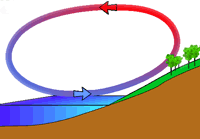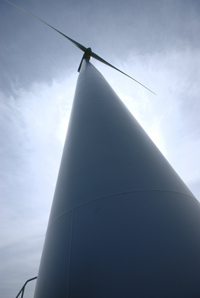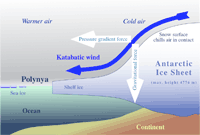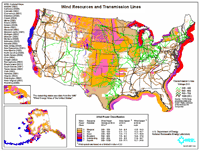Wind Energy
Wind on a Local Scale
There are other, more local ways that wind forms as well.
 | Wind along the coast: Because of the differing heat capacity of land and water, winds consistently blow along coasts. During the day, the sun heats up the land while the ocean water stays the same temperature. The hot air rises. Cool air comes in off the ocean to take the place of the rising hot air. At night, the land cools more than the adjacent water resulting in a land breeze where air rises over the sea and sinks over coastal land. |
| Wind in the mountains: Mountain valleys can have very strong, steady winds called katabatic winds. The term comes from the Greek word katabatikos which means “going downhill.” Air is cooled by the mountaintops and gravity pulls the high density air downhill into the valleys and lowlands below. | |
| Wind on the plains: Wind can build up between large air masses. In the Great Plains region, cool air masses from the arctic meet warm air masses from the tropical waters of the Gulf of Mexico causing a great deal of wind. This region is a substantial contributor of U.S. wind energy. |
| DID YOU KNOW? As the wind moves over the Earth's terrain, friction with the ground can impact wind speed and direction. The faster the wind, the greater the frictional force. Wind machines are built tall to minimize the impact of ground friction and capture faster, stronger winds. |  |



